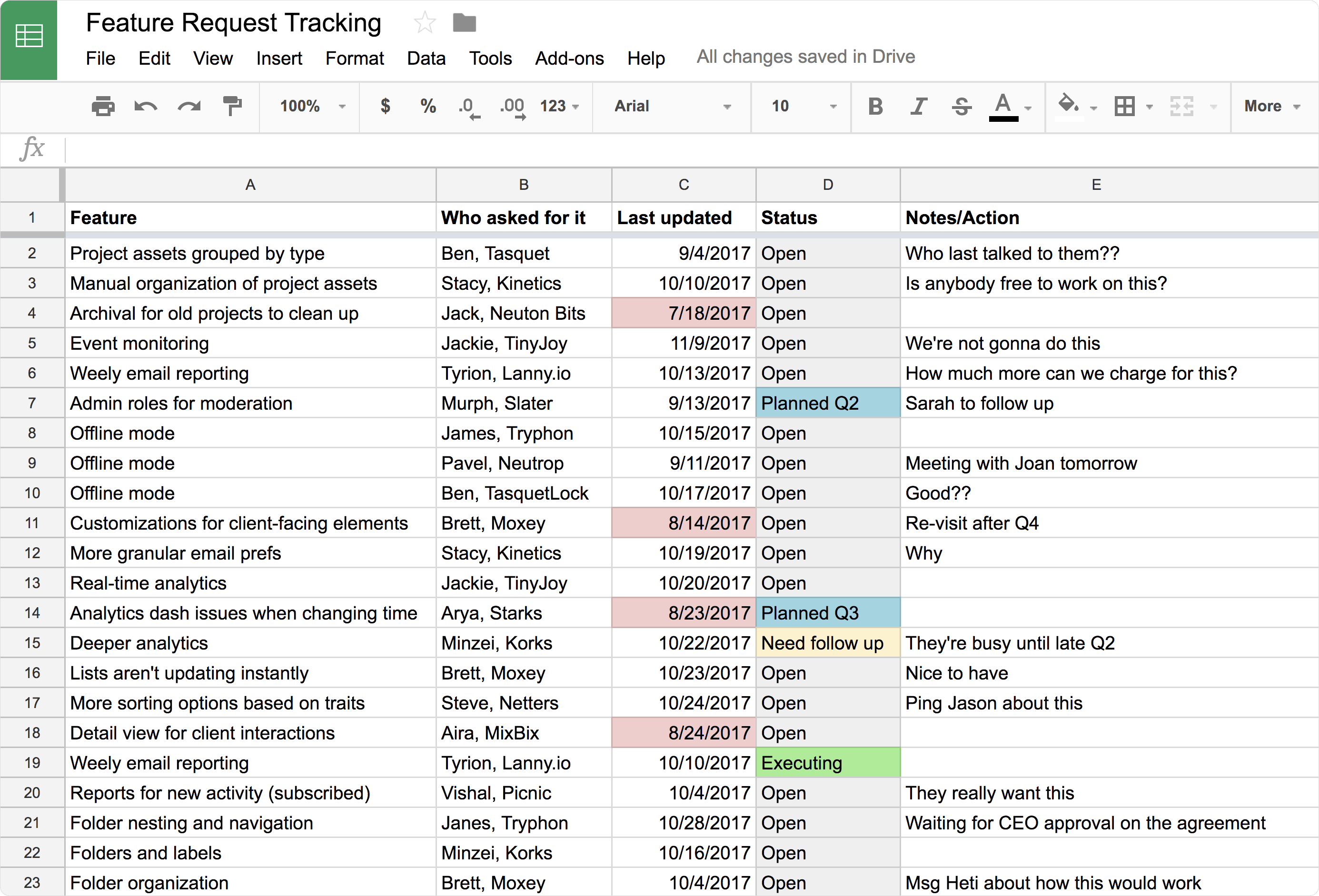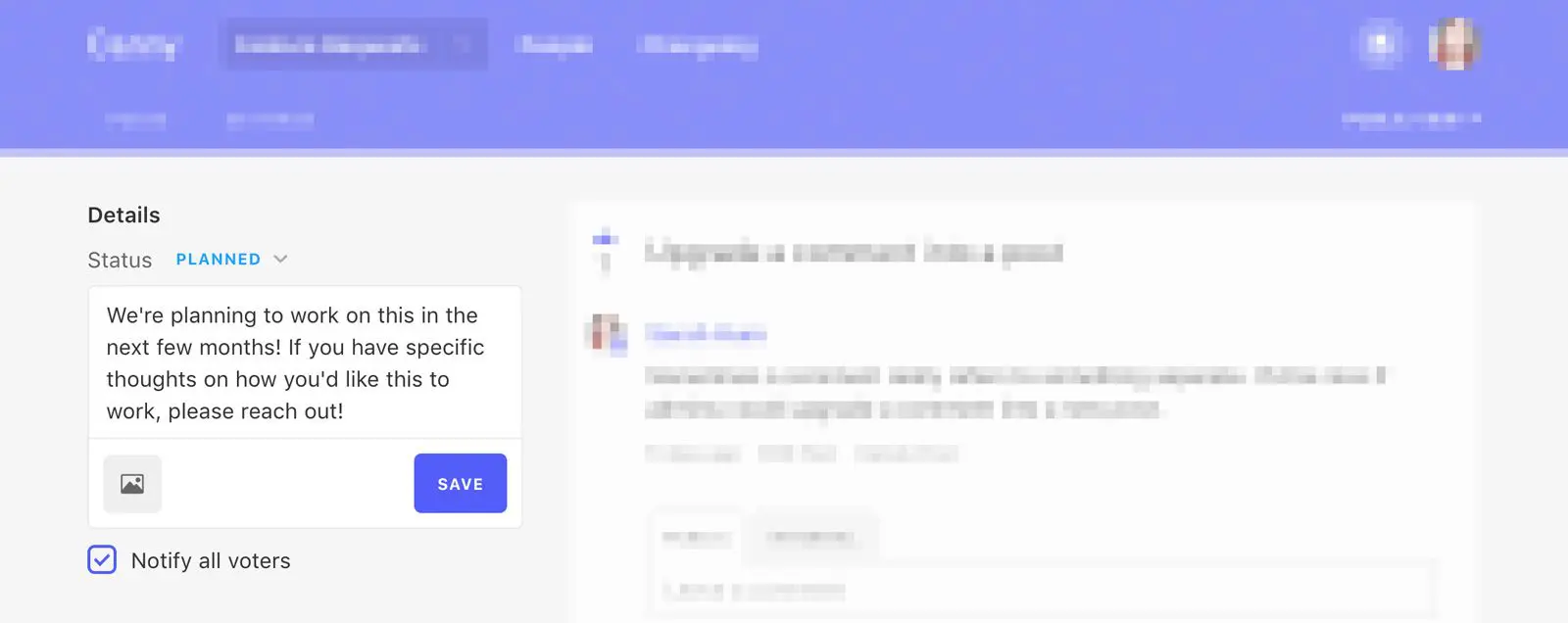A big part of customer support and success is making sure customers have the features they need.
As a customer support agent, you get customer feedback all the time:
- Sometimes, the functionality customers are looking for doesn’t exist
- Or, a feature is confusing or hard to find
- And, your customers will probably have ideas for new things they’d like to see from your tool
In these times, success and support teams are the glue between customers and the product team.
It’s your responsibility to understand the problem at hand and communicate that to the product team.

This post is a part of a series that highlights how Canny can help various organizations within your business.
Check out the whole series:
Improved communication between customer-facing and product teams
Without Canny, customer feedback is very ad-hoc.
You may have a Google doc that you use to record customer requests. You may have conversations with a product manager via Slack.

Communicating with product managers is sporadic and/or unseen. Information gets lost and your customers remain unsuccessful.
With Canny, you have an organized, dedicated home for customer requests. Canny is the level playing field where the product team can see the most important requests. They can then use that information to build their roadmaps.
For success and support, it means being able to keep track of your customers and all their requests. You can see the status of each request and either update customers automatically or on a 1-on-1 basis.
Let your customers be the champions
Without Canny, you need to be the champion for customer needs.
It’s difficult to remember and follow up on everything. But not only that: you also need to fight to be heard.
With Canny, you’re putting your customer at the forefront. The product team can see that there are actual customer accounts that requested a feature.
Instead of trying to remember the details of a feature request, you can add customer insights in real time. Vote on Canny posts on their behalf and include any important customer quotes, details, or specifications.
This way, nothing gets lost and product has everything at their fingertips.

If you use Intercom or Zendesk, it’s even easier to keep track of customer requests. We have integrations with both platforms that allow you to log user feedback without leaving the tool.
This way, you can ensure that the product team will see the request, and your customers will be kept in the loop.
Close the feedback loop
There are two ways you can use Canny to track customer feedback:
- Publicly
Include Canny within your product so your customers have an accessible place to give feedback themselves. - Privately
Empower your customer-facing teammates to track feedback they get in customer conversations on behalf of customers.
If you use Canny publicly, your customers automatically get updated with status changes:

If you use Canny privately, you’ll want to keep an eye on the roadmap. When posts get marked as complete, you have a list of customers to follow up with.
Closing the feedback loop is a great way to re-engage customers. It also shows them that their feedback is important.
Keep everyone connected—even as you scale
As your company grows, it’s easy for product teams to get more and more detached from customers. The sheer volume of people involved creates complexity and distraction.
This puts your entire company at risk.
Product teams should always have a pulse on your customers. What problems do they face? How can we make their lives easier?
As customer success and support reps, you are the glue between customers and product.

It’s your job to make sure that your product team considers customer feedback when it comes to prioritizing what to build.
Canny is an easy way for you to ensure feedback is communicated at all times, and that there is a strong, organized link between customers and product.
If you want to give Canny a try, sign up today!




Great piece that shows how customer solutions can change and benefit companies.